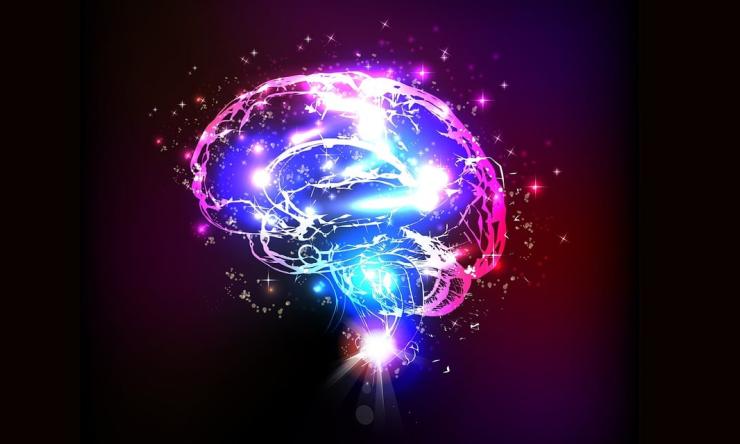Brain stars hold our memories
A study published in Nature by researchers at Baylor College of Medicine changes the way we understand memory. Until now, memories have been explained by the activity of brain cells called neurons that respond to learning events and control memory recall. The Baylor team expanded this theory by showing that non-neuronal cell types in the brain called astrocytes – star-shaped cells – also store memories and work in concert with groups of neurons called engrams to regulate storage and retrieval of memories.
“The prevailing idea is that the formation and recall of memories only involves neuronal engrams that are activated by certain experiences, and hold and retrieve a memory,” said corresponding author Dr. Benjamin Deneen, professor and Dr. Russell J. and Marian K. Blattner Chair in the Department of Neurosurgery, director of the Center for Cancer Neuroscience, a member of the Dan L Duncan Comprehensive Cancer Center at Baylor and a principal investigator at the Jan and Dan Duncan Neurological Research Institute.
“Our lab has a long history of studying astrocytes and their interactions with neurons. We have found that these cells interact closely with each other, both physically and functionally, and that this is essential for proper brain function. However, the role of astrocytes in storage and retrieval of memories has not been investigated before,” Deneen said.
Astrocytes trigger memory recall
The researchers began by developing a completely new set of laboratory tools to identify and study the activity of astrocytes associated with memory brain circuits.
A typical experiment consisted of, first, conditioning mice to feel fear and ‘freeze’ after exposure to a certain situation. When mice were placed back in the same situation after some time, they would freeze because they remembered. If the same mice were placed in a different situation, they would not freeze because it’s not the original context in which they were conditioned to feel fear.
“Working with these mice and with our new lab tools, we were able to show that astrocytes do play a role in memory recall,” said co-first author Dr. Wookbong Kwon, a postdoctoral associate in the Deneen lab.
The researchers show that during learning events, such as fear conditioning, a subset of astrocytes in the brain expresses the c-Fos gene. Astrocytes expressing c-Fos subsequently regulate circuit function in that brain region.
“The c-Fos-expressing astrocytes are physically close with engram neurons,” said co-first author Dr. Michael R. Williamson, a postdoctoral associate in the Deneen lab. “Furthermore, we found that engram neurons and the physically associated astrocyte ensemble also are functionally connected. Activating the astrocyte ensemble specifically stimulates synaptic activity or communication in the corresponding neuron engram. This astrocyte-neuron communication flows both ways; astrocytes and neurons depend on each other.”
When mice were in a situation not associated with fear, they did not freeze. “However, when the astrocyte ensemble in these mice in the non-fearful environment was activated, the animals froze, showing that astrocyte activation stimulates memory recall,” Kwon said.
To better understand what mediates the activity of astrocyte ensembles in memory recall, the researchers investigated the gene NFIA. “Our lab has previously shown that astrocytic NFIA can regulate memory circuits, but whether it acts in ensembles of astrocytes to orchestrate memory storage and recall was unknown,” Williamson said.
The team found that astrocytes activated by learning events have elevated levels of the NFIA protein, and preventing NFIA production in these astrocytes suppresses memory recall. Importantly, this suppression is memory specific.
“When we deleted the NFIA gene in astrocytes that were active during a learning event, the animals were not able to recall the specific memory associated with the learning event, but they could recall other memories,” Kwon said.
“These findings speak to the nature of the role of astrocytes in memory,” Deneen said. “Ensembles of learning-associated astrocytes are specific to that learning event. The astrocyte ensembles regulating the recall of the fearful experience are different from those involved in recalling a different learning experience, and the ensemble of neurons is different as well.”
The current study illuminates a more complete picture of the players that are involved and the activities that take place in the brain during memory formation and recall. In addition, the study provides a new perspective when studying human conditions associated with memory loss, like Alzheimer’s disease, as well as conditions in which memories occur repeatedly and are difficult to suppress, like post-traumatic stress disorder.
Junsung Woo, Yeunjung Ko, Ehson Maleki, Kwanha Yu, Sanjana Murali and Debosmita Sardar also contributed to this work. They are all affiliated with Baylor College of Medicine.
This work was supported by U.S. National Institutes of Health grants (R35-NS132230, R21-MH134002 and R01-AG071687), grant AHA-23POST1019413 and a grant from the National Research Foundation of Korea (RS- 2024-00405396). Further support was provided by the David and Eula Wintermann Foundation, the Eunice Kennedy Shriver National Institute of Child Health and Human Development of the National Institutes of Health award P50HD103555.










